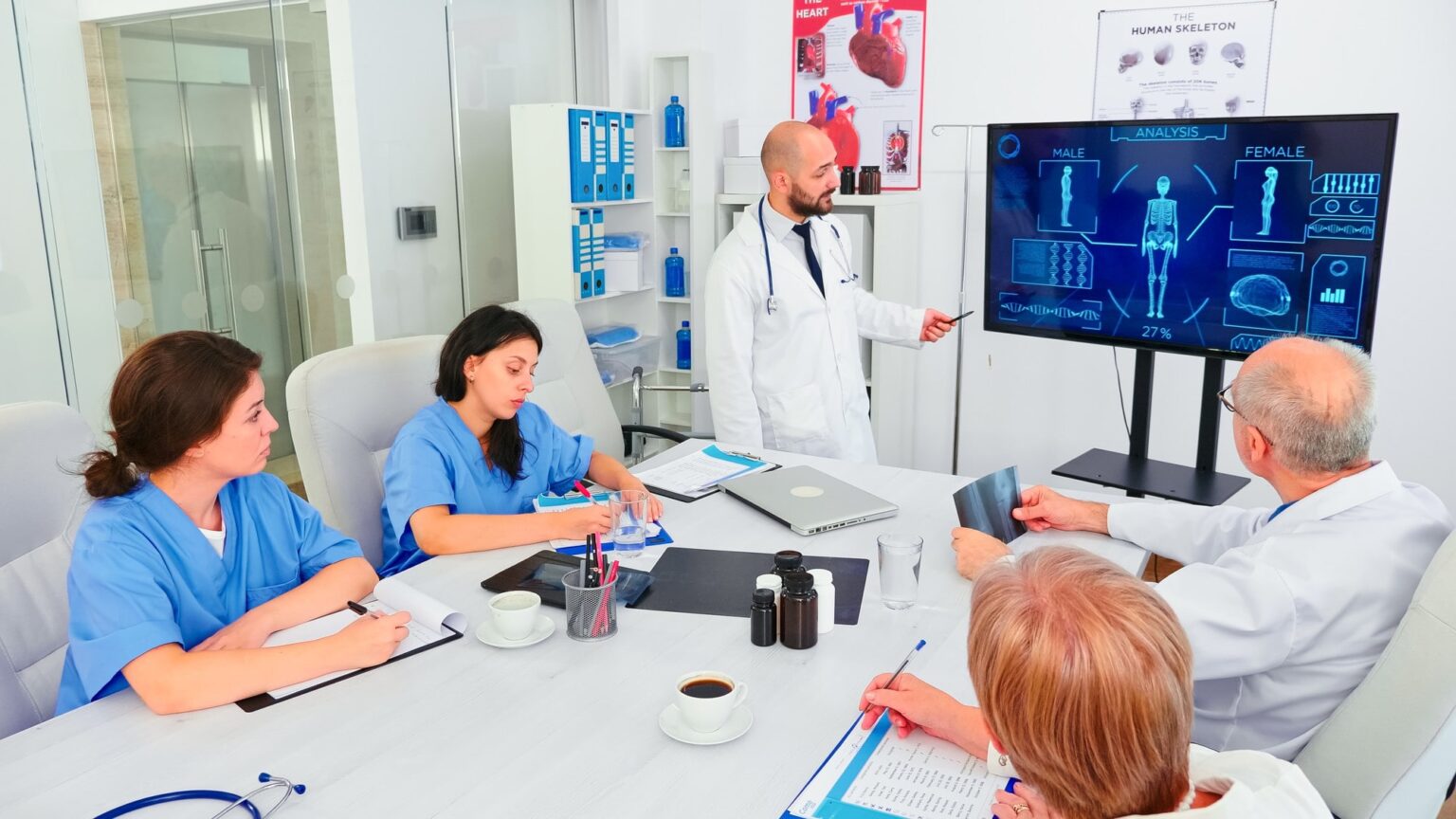Virtual Reality (VR) is playing an increasingly significant role in medical training by providing immersive and realistic simulations of surgical procedures and educational experiences. VR technology offers a range of benefits that enhance medical training and education. Here’s how virtual reality is transforming medical training:
- Realistic Surgical Simulations: VR enables trainee surgeons to practice surgical procedures in a highly realistic and immersive virtual environment. Surgical simulators can replicate the look, feel, and spatial awareness of an operating room, allowing trainees to practice their skills and techniques in a safe and controlled setting. This hands-on experience in a virtual environment helps build confidence, muscle memory, and procedural proficiency before performing surgeries on real patients.
- Replicating Challenging Scenarios: VR allows medical trainees to experience and learn from rare and complex cases that may be difficult to encounter during their training. Virtual reality simulations can recreate challenging scenarios, such as emergency situations or rare medical conditions, enabling trainees to develop critical decision-making skills, teamwork, and crisis management abilities in a risk-free environment.
- Interactive Anatomy Lessons: VR technology provides interactive 3D models of the human anatomy, allowing medical students to explore and study the human body in detail. VR anatomy lessons provide a more engaging and interactive learning experience compared to traditional textbooks or 2D illustrations. Students can visualize anatomical structures from different angles, manipulate virtual organs, and gain a better understanding of spatial relationships.
- Collaborative Learning: VR platforms enable collaborative learning experiences, allowing multiple users to interact and work together in a shared virtual environment. This is particularly valuable for team-based healthcare professions, such as surgery or emergency medicine, where effective communication and teamwork are crucial. Trainees can practice teamwork, communication, and coordination skills in realistic scenarios, fostering interdisciplinary collaboration and improving patient care outcomes.
- Remote Training and Telemedicine: VR can facilitate remote training and telemedicine by creating virtual environments that connect trainees and experts from different locations. This is especially beneficial in areas with limited access to specialized medical training or for rural healthcare providers who can benefit from virtual mentorship and guidance. VR enables remote instructors to guide trainees through procedures and provide real-time feedback, enhancing access to quality medical education.
- Objective Performance Assessment: VR-based training systems can capture and analyze trainee performance data, providing objective feedback on their skills, accuracy, and efficiency. Trainees can receive immediate feedback on their technique, enabling them to identify areas for improvement and track their progress over time. This data-driven approach to assessment supports competency-based medical education and helps tailor training programs to individual needs.
Virtual reality in medical training has the potential to improve patient safety, enhance the quality of education, and accelerate skill development among healthcare professionals. As VR technology continues to advance, the integration of haptic feedback, realistic tissue properties, and machine learning algorithms will further enhance the fidelity and effectiveness of virtual training experiences. It is important to combine virtual reality training with traditional hands-on experiences and clinical rotations to ensure a comprehensive and well-rounded medical education.



